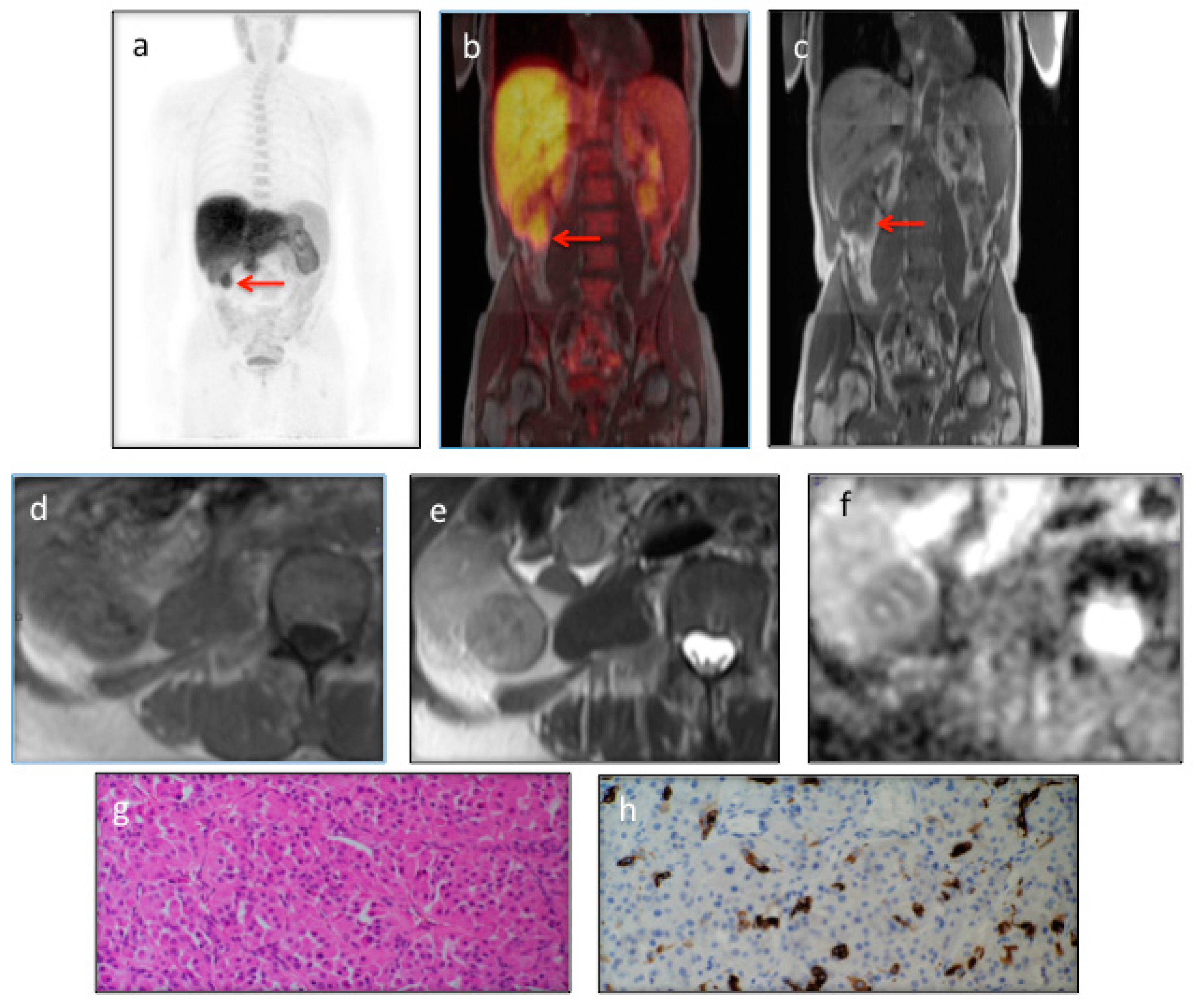An Incidental Renal Oncocytoma: 18F-Choline PET/MRI
Abstract
:
Conflicts of Interest
References
- Jadvar, H.; Colletti, P. Competitive advantage of PET/MRI. Eur. J. Radiol. 2014, 83, 84–97. [Google Scholar] [CrossRef] [PubMed]
- Ng, K.L.; Rajandram, R.; Morais, C.; Yap, Y.; Samaratunga, H.; Gobe, C.G.; Wood, S.T. Differentiation of oncocytoma from chromophobe renal cell carcinoma (RCC): Can novel molecular biomarkers help solve an old problem? J. Clin. Pathol. 2014, 67, 97–104. [Google Scholar] [CrossRef] [PubMed]
- Nikken, J.J.; Krestin, G.P. MRI of the kidney, state of the art. Eur. Radiol. 2007, 17, 2780–2793. [Google Scholar] [CrossRef] [PubMed]
- Prettner-Pallwein, L.; Flory, D.; Rotter, C.R.; Pogner, K.; Syré, G.; Fellner, C.; Frauscher, F.; Aigner, F.; Krause, F.S.; Fellner, F. Assessment and characterisation of common renal masses with CT and MRI. Insights Imaging 2011, 2, 543–556. [Google Scholar] [CrossRef] [PubMed]
- Hotker, A.; Mazaheri, Y.; Wibmer, A.; Zheng, J.; Moskowitz, C.S.; Tickoo, S.K.; Russo, P.; Hricak, H.; Akin, O. Use of DWI in the differentiation of renal cortical tumors. AJR 2016, 206, 100–105. [Google Scholar] [CrossRef] [PubMed]
© 2016 by the authors; licensee MDPI, Basel, Switzerland. This article is an open access article distributed under the terms and conditions of the Creative Commons by Attribution (CC-BY) license (http://creativecommons.org/licenses/by/4.0/).
Share and Cite
Mallia, A.; Bashir, U.; Stirling, J.; Wolfe, K.; Goh, V.; Cook, G. An Incidental Renal Oncocytoma: 18F-Choline PET/MRI. Diagnostics 2016, 6, 14. https://doi.org/10.3390/diagnostics6020014
Mallia A, Bashir U, Stirling J, Wolfe K, Goh V, Cook G. An Incidental Renal Oncocytoma: 18F-Choline PET/MRI. Diagnostics. 2016; 6(2):14. https://doi.org/10.3390/diagnostics6020014
Chicago/Turabian StyleMallia, Andrew, Usman Bashir, James Stirling, Konrad Wolfe, Vicky Goh, and Gary Cook. 2016. "An Incidental Renal Oncocytoma: 18F-Choline PET/MRI" Diagnostics 6, no. 2: 14. https://doi.org/10.3390/diagnostics6020014




